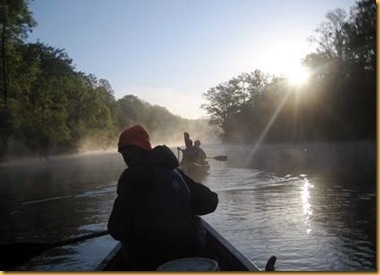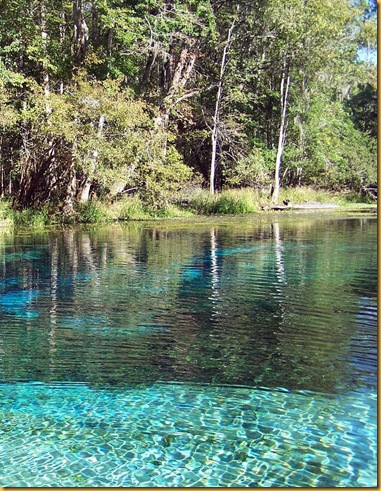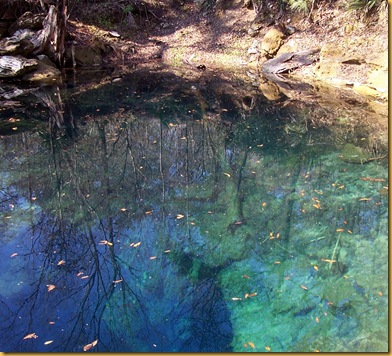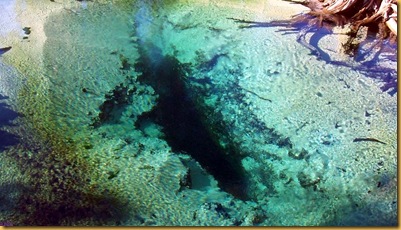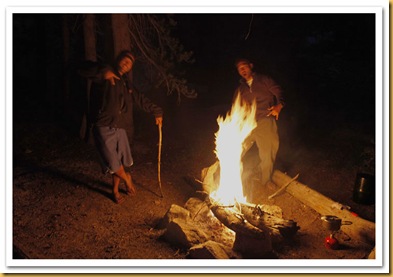The Suwannee River empties the great Okefenokee Swamp in southeast Georgia, sending its tannin-stained waters across northern Florida to the Gulf of Mexico. The ambition of Eagles, the primary therapy group of ten adolescent campers that Chief Randy and I led, was to float in canoes from its headwaters to Manatee Springs near its mouth.
At the start, the rivulets were too shallow for the canoes to float free of the sandy sediment through which the rivulets meandered. “You’ll have to get out and pull the bow rope,” someone said to Shane, who reluctantly sloshed into the river in his Vietnam-style canvas army boots. As only a neutral environment insisting on concrete objectives can provide, this latest planned act of “therapeutic wilderness camping” intended on helping our wards who had emotional problems take responsibility for their choices and understand the consequences of their behavior.
Soon the pull of gravity had gathered enough water from the higher reaches of the watershed to fill the Suwannee to an easy floating depth. It was January, and we had left our snow-laden base camp on the Piedmont Plateau near Candor, North Carolina like migrating birds heading south for the winter. We would spend the next four weeks exploring the spring-fed runs that empty into the Suwannee all along its shoreline.
The springs help make Florida famous. Marjorie Kinnan Rawlings, in her novel The Yearling, immortalized their sparkling waters that burst forth from limestone to fill pools surrounded by sandy hammocks of scrub oak, loblolly pine, and palmetto.
“A spring as clear as well water,” she wrote, “bubbled up from nowhere in the sand. It was as though the banks cupped green leafy hands to hold it… Beyond the bank, the parent spring bubbled up at a higher level, cut itself a channel through white limestone, and began to run rapidly downhill to make a creek.”
The waters of such springs as Blue and Peacock maintain a constant 72 degrees Fahrenheit. The clarity of the crystalline water reminded me of the aquariums in the classrooms in which I’ve taught Biology over the years.
Nearing Hart Spring, we saw clear water from its run collide with the Suwannee, stained dark with tannin from the bald cypress in the Okefenokee. “Great lunch site,” I had said to the boys earlier. We paddled up the run and beached near the pool that fed it. The water at the sources of many small springs we had seen spouted sand like earthen geysers within an aquatic fairyland fit for characters out of a Disney film. But Hart Spring is a “second magnitude” spring. Its gaping outlet, easily visible through the turquoise blue water, discharged close to 100 cubic feet of water per second.
If done right, swimming down a spring-fed run to the Suwannee is like Tinkerbell twittering through a Peter Pan playground. With back arched and arms outstretched beyond my head, I let the back of my head sink till water covered my ears, blotting out sound. The scary part is letting feet fall and believing that there’s enough buoyancy in the lungs to really keep eyes and nose above water. I hated the grueling training for this skill when earning my Boy Scout merit badge, but now I reveled in the benefit. I held my breath so lungs behaved like a fish’s air bladder and silently, and in silence, floated down the run without effort of any kind, letting the live oak and loblolly pine canopy frame the birdscape of the blue sky above. Enchanting!
To celebrate a successful day of paddling, we found at our campsite what locals call “resin wood,” dead pine filled with sap that has been hermetically sealed in rich bog soil so as to age like fine whiskey spirits. With it we stoked a fire big enough to challenge the one the naturalist John Muir made in 1879 during a rainy gale in Alaska that sent up a pillar of flame thirty feet high. Remembering the hooping and hollering of the boys amidst glowing trees against a jet-black background, I looked up Muir’s words.
“I have enjoyed thousands of campfires…warm-hearted, short-flamed, friendly little beauties glowing in the dark on open spots in high Sierra gardens, daisies and lilies circled about them, gazing like enchanted children; and large fires in silver fir forests with spires of flames towering like the trees about them, and sending up multitudes of starry sparks to enrich the sky…But this Wrangell campfire, my first in Alaska, I shall always remember for its triumphant storm-defying grandeur, and the wondrous beauty of the psalm-singing, lichen-painted trees which it brought to light.”
